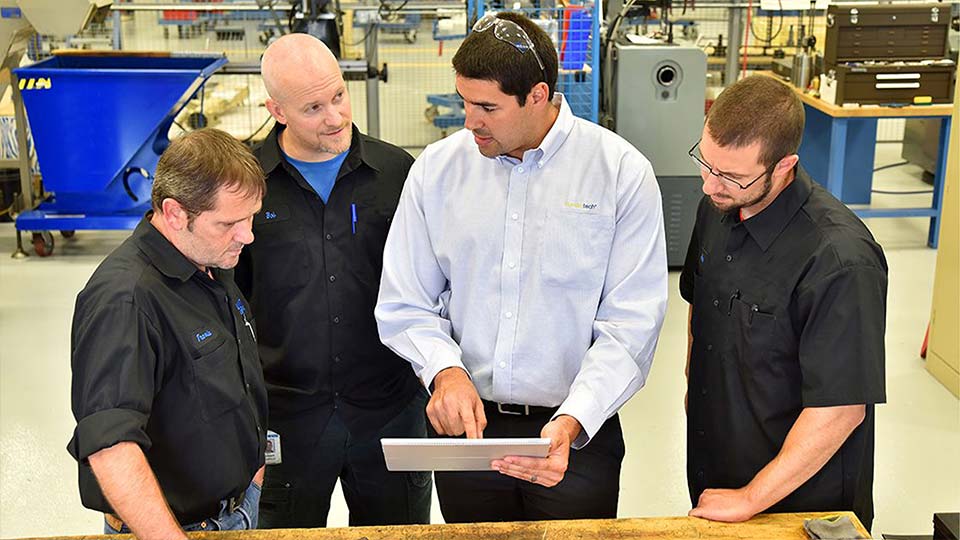Implementing Ergonomics Solutions: Gaining Employee Buy-in
Posted on February 8, 2022 | in Ergonomics

The main goal of an ergonomics program is to implement engineering solutions that help fit the job to the person. In an ideal world these solutions are taken into consideration during the workstation design phase. However, this is not always the case. Many ergonomics teams find themselves assessing and modifying workstations that have already been implemented, which is less cost-effective and can present too much unfamiliarity and disruption to an employees’ tasks.
Changes in the workplace generated from the ergonomics job improvement process can take many forms – including workstation modifications, equipment changes, policy updates, and process improvement. The benefits that follow proper ergonomics include a reduction in musculoskeletal disorders, a reduction in rework, and an increase in worker productivity.
These benefits aren’t always clear to employees, and there may be resistance to the change due to fear (e.g., concerns that automation will take away jobs or lower employee hiring standards and qualifications) or the difficulty of adjusting to new habits (e.g., new actions involve a consistent, conscious effort to complete the same work).
Here are some tips to improve employee buy-in when implementing improvements at your facility:
- Involve employees in the ergonomics job improvement process.
- Operators are the task experts. Therefore, getting them involved will help target the direct cause of the ergonomics issue. Employees are more likely to adapt to a change if they feel they had a say in the process. Increase employee involvement by:
- Conducting operator interviews prior to the ergonomics assessment – ask what improvements they think would make the job easier for them.
- Building a cross-functional ergonomics team. Invite operators that want to be involved to attend the ergonomics team meetings and participate directly in the job improvement process.
- Providing a two-way communication channel for employees to share their thoughts, questions, and concerns about upcoming improvements, assessments, or past results.
- Inviting employees to equipment or workstation mock-up trials to gather additional feedback prior to implementation on the production floor.
- Completing follow-up operator surveys after the improvements have been implemented to gather feedback about the changes made and, if needed, identify opportunities to further improve the task. We recommend waiting two weeks after the improvements have been implemented to gather employee feedback.
- Operators are the task experts. Therefore, getting them involved will help target the direct cause of the ergonomics issue. Employees are more likely to adapt to a change if they feel they had a say in the process. Increase employee involvement by:
- Communicate effectively about upcoming ergonomics improvements.
- Include key details such as what is changing, why it is changing, when the change is happening, benefits to the employee, and what your expectations are for the employee. Provide these details early and frequently, and use different methods (e.g., email, voice announcements, and communication boards) for effective communication.
- Make a change!
- It’s important not to let perfection prevent you from making improvements. Start with quick and easy, low-cost solutions that address the low-hanging fruit. Simple solutions that improve employee comfort without making drastic changes to the workstation or process flow can help them gain appreciation for the ergonomics program. Next, implement the custom or higher-cost solutions when it’s feasible. Before and after photos are a great way to highlight “ergo wins”.
- Follow a consistent process.
- Make sure you have a standardized way of implementing changes. Create a process that involves effective communication, gathering and incorporating employee feedback, including them in the decision-making process, and addressing the feasible solutions in a timely manner. Having a process that is consistent is key because change to standard operating procedures can be a big deal to employees.
Resistance to change is very common in the workplace. When making modifications to workstations on the production floor, good communication, employee involvement, quick improvements, and consistency can help reduce employee fear of change and encourage adaption to new procedures.